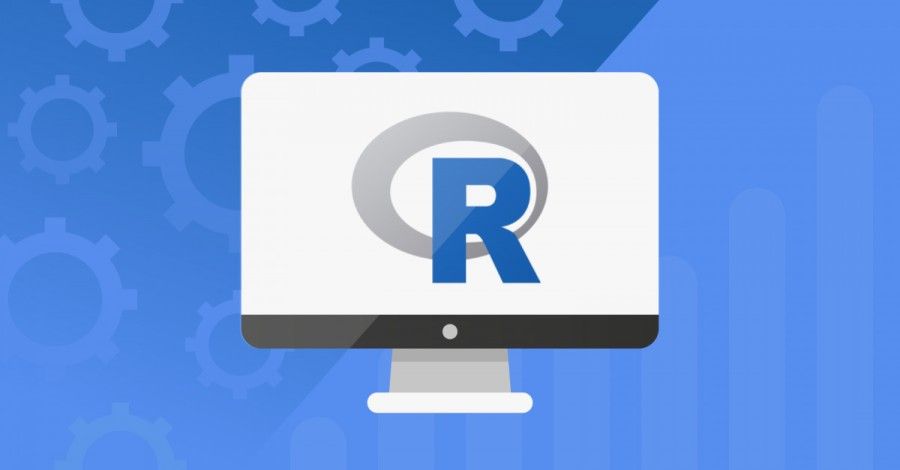R programming language plays a major role in managing data science projects. Every data science professional needs to stay updated with R libraries if they’re going to work with projects related to statistical computing.
If asked about the most popular programming languages in data science, all you’d hear is Python followed by R.
Well, both R and Python are widely used in data science, although Python seemed to gain more popularity in the field.
R programming language is also a popular tool used in the data science industry.
While we’re all acquainted with Python and its libraries, we will further discuss the most useful R libraries for data scientists.
R is an open-source programming language and software ideal for statistical computing. The inbuilt interface is designed and well-suited for data modeling and algorithms. The programming language composes of over a hundred libraries thus best suited to solve multiple complex problems.
R programming language is most popular amongst data miners and statisticians. Moreover, both Python and R possess unique features and should not be compared.
Without further ado, we will start discussing the R libraries used specifically in machine learning, data visualization, and data manipulation. Learning R libraries is an add on advantage for a data science professional.
Machine learning
- caret
The caret package referred to as Classification And REgression Training is a set of functions that helps streamline every process that creates predictive models. This package composes tools that can be used for –
- Data pre-processing
- Model tuning with the help of resampling
- Estimation of variable importance
- Data splitting
- mlr
A well-known machine learning package that presents data to multiple regression and classification techniques. Besides this, the mlr is likely able to process –
- Hyperparameter tuning using modern optimization techniques ideal for both single and multi-objective problems.
- General and clustering, cost-sensitive example specific learning, and survival analysis.
- General resampling which includes bootstrapping, subsampling, and cross-validation.
- randomForest
Once split on the data training and test sets, the random forest classifier offered by randomForest packages can be used to develop random forests with n number of trees.
- vcd
vcd library is ideal for visualization which is further used for categorical data.
- glmnet
elastic-net regression methods and lasso used through cross-validation. For more machine operations, you can try mlbench, MASS, tree, and ipred.
Data visualization
A data science professional must be aware of tools and libraries used in R. Nonetheless, below are some of the most popular libraries in data visualization.
- ggvis
The ggvis library is ideal for web-based graphics which are built along with the grammar of graphics. ggvis helps incorporate react programming in data manipulation. Building an interactive graphic for exploratory data analysis couldn’t get any easier.
However, it is slightly different from ggplot2 in terms of visual representation.
- ggplot2
One of the commonly used package to create beautiful visualization includes ggplot2. It allows you to use the grammar of graphics to build customizable, layered plots.
- htmlwidgets
htmlwidgets offers efficient and faster means that can build interactive – javascript based using R via htmlwidgets. Some of the packages which help implement htmlwidgets that include DT (tables), network3D (network graphs), leaflet (maps), and diagrammeR (diagrams).
- rgl
A 3D graphic package that helps produces a real-time interactive 3D plot that allows to zoom graphics, select regions, and rotate interactively. rgl encompasses high-level graphics which commands modeled loosely after using classic R graphics.
Data manipulation
- data.table
data.table is an improved version of data.frames that help sort data in R. Performing data manipulation operation gets easy with the help of data.table – group, update, join, and subset. With all these related operations kept together, data manipulation using R becomes much faster.
- readr
readr known as Read Rectangular Text Data allows a quicker way to read rectangular data such as tsv (tab separated values), fwf (fixed width files), delim (delimited values), and csv (comma separated values). It is ideal for resolving multiple formats of data found from different sources. It is also a part of core tidyverse, therefore even installing tidyverse will work well.
- tidyr
tidyr helps in making data in R clean. A clean and tidy R is crucial since it limits your time fighting with tools used for analysis. With this package, tools help in changing the format or layout of the data set you intend to use to convert data to make it tidy.
- lubridate
lubridate is a tool that makes working with periods, time, and dates easier. One of the easiest ways to get the lubridate tool is by installing tidyverse.
- stringr
stringr belongs to the family of tidyverse which is used in providing a wide range of functions that can work with character strings and regular expressions.
These are some of the most commonly used R libraries you need to master to stay relevant in the data science industry.
The rising trend of R libraries for a data scientist is becoming an important tool in the data science realm. However, the decision to choose the programming language should depend upon the project you’re taking up.

 " style="width: 100%;height:600px;">
" style="width: 100%;height:600px;">